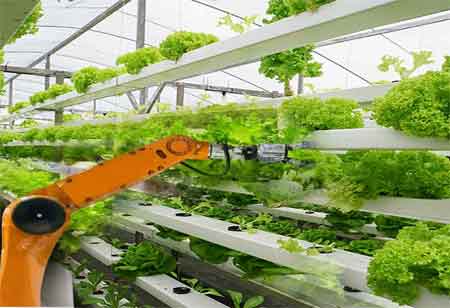Thank you for Subscribing to Agri Business Review Weekly Brief
Different Types of Hydroponic Systems With Advantages.
Hydroponics systems come in all sizes, from small indoor herb gardens sitting on your kitchen counter to massive industrial-scale operations that take up entire warehouses.

By
Agri Business Review | Thursday, October 27, 2022
Stay ahead of the industry with exclusive feature stories on the top companies, expert insights and the latest news delivered straight to your inbox. Subscribe today.
Today's systems are extremely sophisticated, and larger-scale ones may include sensors, cameras, and artificial intelligence (AI) software to monitor plants carefully.
FREMONT, CA: Hydroponics systems come in all sizes, from small indoor herb gardens sitting on your kitchen counter to massive industrial-scale operations that take up entire warehouses. Today's systems are extremely sophisticated, and larger-scale ones may include sensors, cameras, and artificial intelligence (AI) software to monitor plants carefully.
The three principal types of hydroponic cultivating systems are:
• Nutrient Film
• Ebb and Flow
• Wick
Nutrient Film
The most normal type of hydroponics system in utilizing today uses a nutrient film approach. A nutrient film system cultivates plants in a growing tray that is a little tilted and placed above a nutrient solution tank.
Water is pumped from the reservoir into the cultivating trays. As the trays are angled, this nutrient film approach allows a thin stream of water to flow over the plant's roots and then empty back into the reservoir below. It is an entirely closed system.
Ebb and Flow
In an ebb-and-flow hydroponic system, rather than having a constant stream of water running over the roots, the plant roots are drowned with the nutrient/water mixture. The water is constantly emptied back into the reservoir to be reprocessed.
Wick
A wick system has the identical growing-tray-above-and-reservoir-below setup as the other two systems. Still, it also requires a non-soil cultivation media like sand, rock, wool or clay balls to support and anchor the roots in the cultivating tray. The nutrient-rich water is passed from the reservoir to the roots in the growing tray through a wick or a piece of string. This system does not need the use of an electric water pump.
Advantages Of Hydroponics
Growing plants in a liquid nutrient solution affect plants' root architecture, causing them to cultivate more efficiently than in soil. This is the clearest advantage of a hydroponics system, but there are other advantages.
More Plant Density
Because they're not stuck in the dirt, plants can easily be moved as they grow. Hydroponic greenhouses usually have a room devoted to germination and seedling production, so they can execute these preliminary steps before moving adult plants into the main growing area.
Growing plants in liquid also reduce the area required to grow beyond if grown in soil, meaning more plants can be grown in the same space.
Add in the fact that you can grow plants vertically, like Bowery, and you can fit many more plants in the same land area than growing with soil. So, for example, in a warehouse measuring 25,000 square feet, we can grow many more plants than a plot of land with the same square footage because we can grow them on levels going upwards.
Higher Crop Yields
It is common for hydroponic greenhouses to report higher yields and better quality produce than traditional growing operations. This is especially achievable today with the use of AI to monitor plants.
Less Water Waste
In hydroponics systems where the roots are encased in a closed trough or tube, less water evaporates than in soil growing systems, meaning less water is wasted. So in this regard, it is a closed system.





